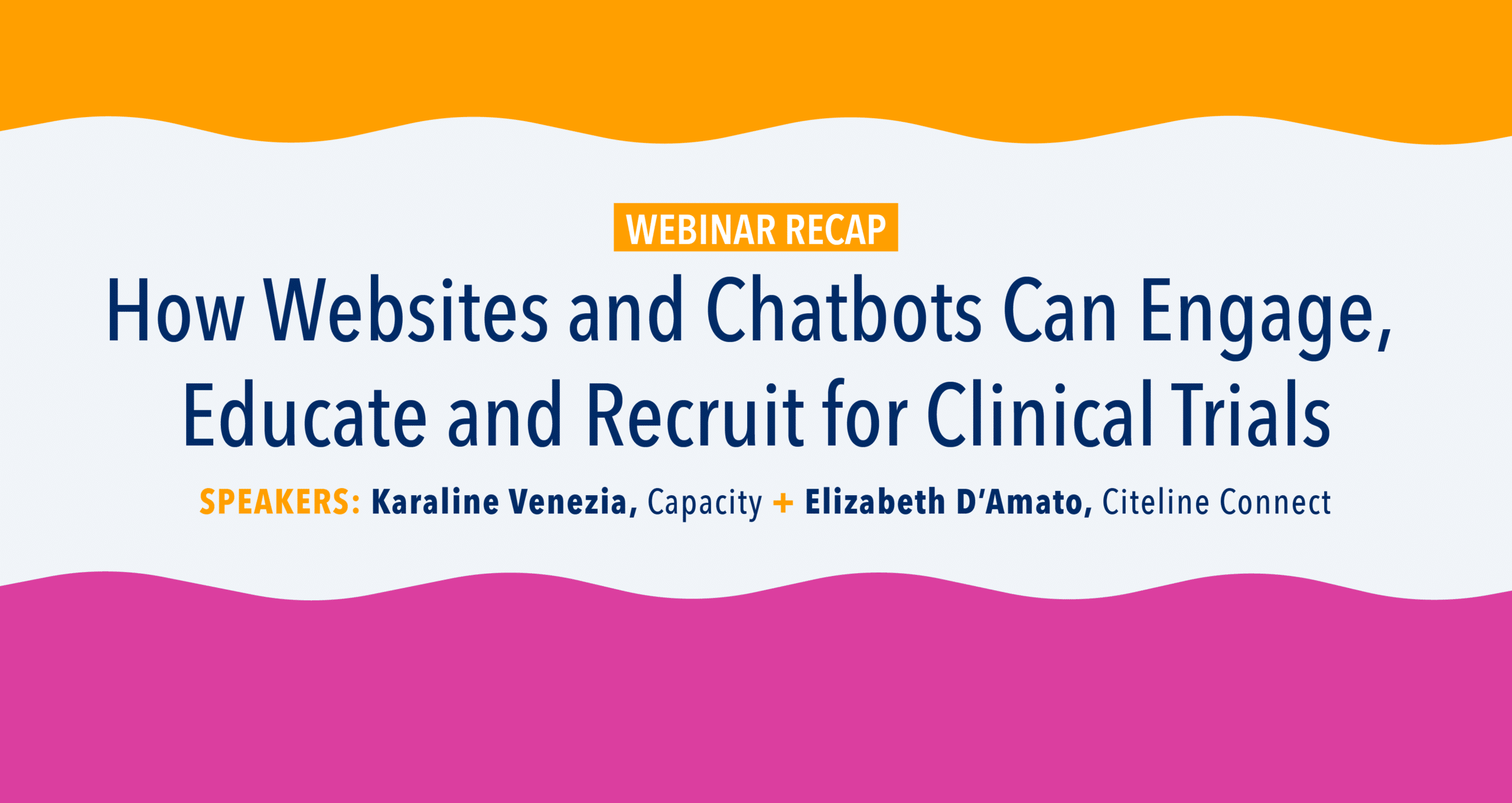Despite interest in clinical trials, recruitment can be slower and more challenging than anticipated.
For example, research shows that most cancer clinical trials do not meet their enrollment targets. Only eight percent of cancer patients participate in clinical trials, which is unfortunate since patients typically receive excellent treatment throughout these trials. Based on the data from 13 studies involving nearly 9,000 patients, over half did not have a trial available to them, proving that access to clinical trials is an issue.
In this article, we’ll be recapping our latest webinar on how websites and chatbots can transform the success of clinical trials with the ultimate goal of engaging, educating, and recruiting participants.
Discussing the patient journey when joining a clinical trial.
To recruit participants, you must first understand their journey and why they join.
Drawing on two compelling stats, it was found that 69 percent of participants said the number-one reason to join is to improve their quality of life, and the remaining 31 percent ranked the desire to help future patients and accelerate research as their number-one reason to participate.
This shows that where patients are in their journey can make a difference concerning what motivates them most.
When patients are ready to join a clinical trial, how do they do so?
- 43 percent of patients use a general internet search, showcasing an increase in independence and control over a patient’s potential treatment
- 92 percent of people say they are ‘somewhat’ to ‘very’ interested in registering their contact information to be informed when an appropriate clinical trial becomes available
Although digitalization significantly influences the participant’s journey, 77 percent of people want the industry to make it easier to learn about clinical trials, especially concerning the next steps they need to take.
For example, hopeful participants may go online to search for clinical trials, ending up on ClinicalTrials.gov — which is not set up for everyday users. Being “overwhelming” and “difficult to navigate,” this site often leads to unsuccessful clinical trial research results.
This means that patients willing to engage and become a part of the trial community do not proceed. The process needs to be more seamless and approachable.
How can sponsors help address the needs of participants?
This brings us to a potential solution, focusing on the fact that the digital experience is the patient experience.
One approach would be to build a dedicated website for the patient to increase accessibility. This website would include:
- Content that is easy to read and understand (not written in medical terms)
- A simplified design that is easy to navigate
- A single source of trial information
- Appropriate education and support where needed
The response rate to these needs is growing.
Over the past few years, several ground-breaking sites have been developed to increase engagement and retention rates among patients.
Moderna’s clinical trial website is an excellent example, as this site is built with everyday participants and patients in mind. Whether you want to learn about their clinical trials and why you would participate, or simply how to find a Moderna trial, it’s easy to take the next step. Calls to action are displayed while chatbots and conversational AI support this process.
More on the power of chatbots.
Websites are a critical tool in the recruitment process. However, they typically offer only one-way interactions. Prospective participants can go to a website to learn more information or even apply to take part in an upcoming trial, but chatbots take the user experience to the next level. They create two-way conversations, improving patient satisfaction.
Based on research by Capacity, when prospective participants interact with chatbots and get the answers they seek, they are more likely to enroll in a clinical trial.
One of the most common questions that are asked is, “are clinical trials safe?”
AI technology will provide the most appropriate answer when asked this question or one of many other questions (which helps build a more informative and effective database). This allows the user to continue asking questions or confidently move ahead with the next step within the process. This is just one example of how chatbots can be used for the recruitment process. Prospective participants can also receive guidance when joining a clinical trial, receiving notifications for upcoming trials, and more. Chatbots are customizable, which is what makes them so effective.
Automating the clinical trial recruitment process with Capacity.
As discussed, a well-designed and informative website is the first step in the recruitment process. However, technologies that leverage automation, such as chatbots and AI, can increase success rates even further.
Capacity is an AI support platform that recently partnered with Citeline Connect, a clinical trial recruitment platform. This partnership has helped customers, such as Moderna, create more engaging websites through AI-powered chatbots.








































